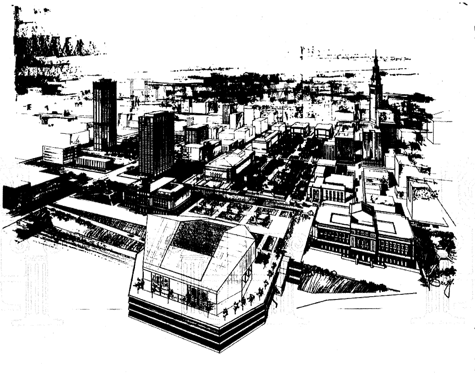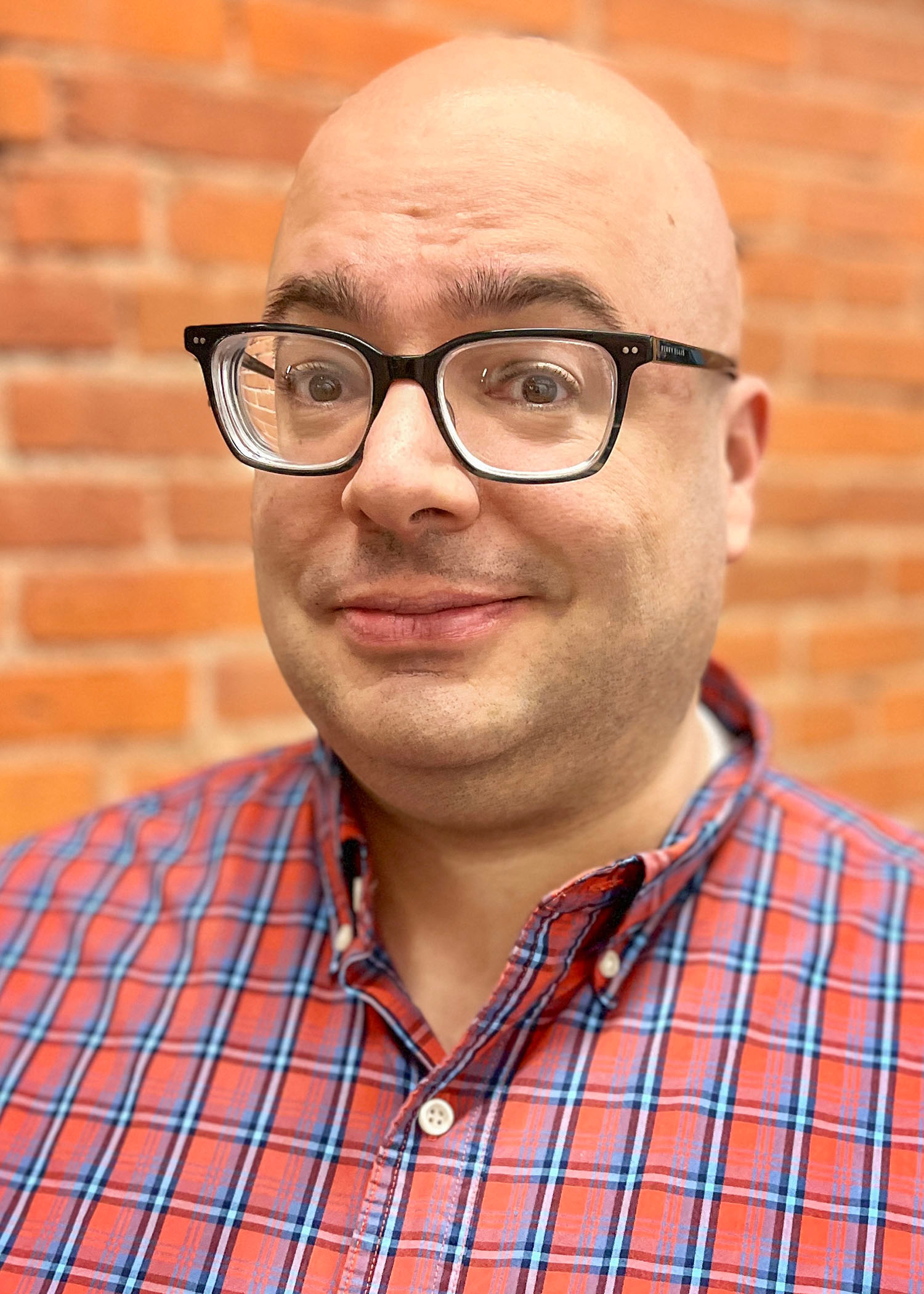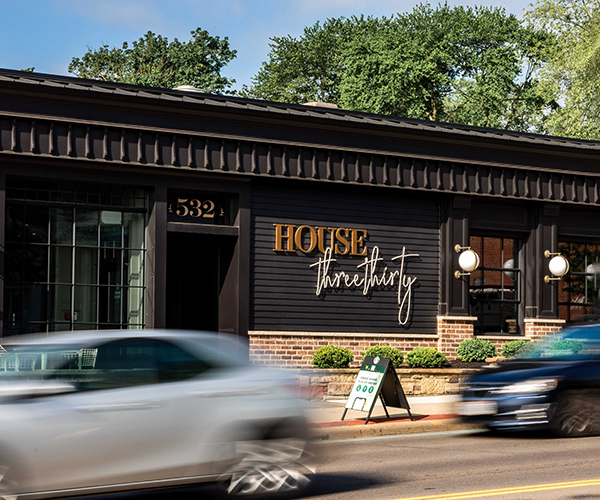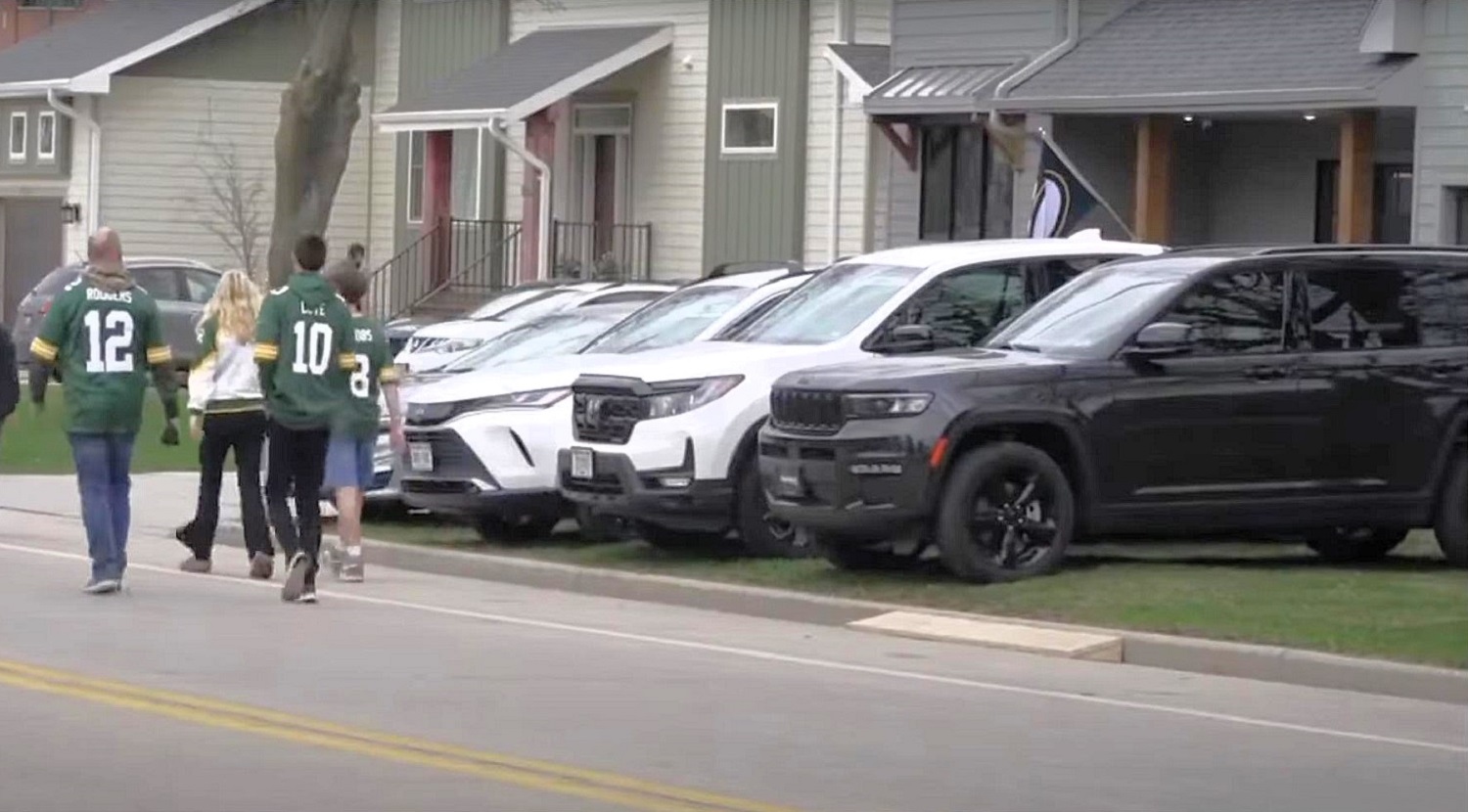This Westlake Architect Thinks a Dome Stadium Would Be Perfect for the Cleveland Browns
by Vince Guerrieri | Apr. 13, 2023 | 8:00 PM

Although a majority of residents favor one, it appears there will be no domed stadium in Cleveland anytime soon.
Browns owner Jimmy Haslam said as much at the NFL owners meetings in Phoenix in March. “In all likelihood, it’s not going to have a dome, but it’ll be a substantial remodel of the existing facility and we’re probably 3-5 years from that happening,” said Haslam, the Browns’ owner for the last decade.
A 2022 report indicated that the Haslams were considering a domed stadium, potentially in a different location than the lakefront site that has been the Browns’ home since the team’s founding in 1946. Costs to rebuild FirstEnergy Stadium to the point where it could accommodate a dome — retractable or not — would approach the costs of a new stadium entirely.
But Robert Corna thinks a dome can be done — and he could be the guy to do it.
The Westlake architect has been pitching domed stadiums for the better part of the past 40 years. His latest idea is what he calls the Megatron (pictured above), a glass superstructure around FirstEnergy Stadium, with a retractable roof.
“Conceptually, it would open up the lakefront,” he says. “Do something bold. This is something nobody else has. This outdoes L.A. — and we don’t have to spend $6 billion.”
The first domed stadium was the Astrodome in Houston, billed as the Eighth Wonder of the World when it opened in 1965. But the idea of a domed stadium goes back even before that. One of Detroit’s Olympic bids in the 1940s included one. And when the Dodgers were considering a new stadium in Brooklyn, before their move to Los Angeles, futurists Norman Bel Geddes and Buckminster Fuller each designed a domed stadium.
The idea of a dome in Cleveland was first pitched in 1970. Nicholas Popil of Parma received a patent three years earlier for a retractable fabric cover over the top of Municipal Stadium, held up by air pressure (this idea was later used successfully at the Metrodome in Minneapolis and the Pontiac Silverdome in Michigan). The open end of the stadium would have to be enclosed, and the stadium wouldn’t be climate-controlled, but Popil, an estimator for the H.K. Ferguson Co., said the roof could be added at a cost around $4 million, and operated annually for around $30,000. That plan went nowhere.
A decade later, as Municipal Stadium was starting to get a little long in the tooth, plans were considered for a new stadium. In 1984, Cuyahoga County voters turned down — by a 2-1 margin — a property tax increase that would fund a new domed stadium on the site of the old Central Market on the southern edge of downtown.
The following year, Corna made his initial proposal of the Hexatron, attracting the attention of, among others, Jeff Jacobs, a state representative from Bay Village. The Hexatron would go north of the mall, spanning the railroad tracks that even today separate downtown from the lakefront, and tie in with the convention center – a cue taken from Indianapolis, which had built a dome next to its convention center, in the hopes of luring an NFL team (which turned out to be the Colts). Corna says at the time, the Hoosier Dome was in use 250 days a year. The Hexatron would have giant sliding panels on the roof, which could open, making it the first retractable roof stadium in the world.

Later in 1985, the Greater Cleveland Domed Stadium Corporation was established, with the goal of building a dome on the Central Market site for the Indians and Browns. “We looked at a dozen sites, but it was clear that the site was the right one,” says Dennis Lafferty, the first director of the corporation.
The Domed Stadium Corporation had more political pull and soon lapped the Hexatron proposal. (Then-Mayor George Voinovich opposed the Hexatron, and Modell and Indians ownership said they had no interest in the Hexatron unless it was backed by the Domed Stadium Corporation.)
But soon, circumstances changed. In 1986, Richard and David Jacobs, Jeff’s father and uncle, respectively, bought the Indians.
“Up until that point in time, there was a commonality of interests between the Browns and the Indians in jointly owning and operating the facility,” Lafferty says. “Dick Jacobs made it clear very quickly that he was not interested in a domed facility, and obviously, from that point forward, things started to move in different directions. A domed stadium in Cleveland made sense at the time for the two teams, but it wasn’t to be.”
The Central Market site would still be used, but as the site of the Gateway project, a baseball-only stadium for the Indians — and eventually, a new arena for the Cavaliers. Jacobs Field opened to great fanfare in April 1994, and that fall, Gund Arena opened.
A year later, Art Modell announced that he would be moving the Browns to Baltimore (ironically, the city abandoned by the Colts in favor of a new domed stadium in Indianapolis). The city of Cleveland got an unprecedented settlement with the NFL, keeping the Browns’ name, history and colors and extracting the promise of a new team by 1999.
But a new team would require a new stadium — in a hurry.
Cleveland Browns Stadium opened in 1999. It might have been an improvement over Municipal Stadium, but there wasn’t a whole lot of other praise for it.
“They just built it too fast,” Corna says. “When they built the stadium, I was there to at least get them not to preclude adding a cover later, but it fell on deaf ears.”
When Haslam bought the team in 2012, he at least said he’d consider a domed stadium, but it appeared to be little more than lip service. (And anyway, a contemporary story said that putting a dome on the stadium would be “a nightmare.”)
Corna tried to get in Haslam’s ear because he thought it could be done then — and still thinks it can be done, particularly since building technology has advanced even in just a decade. He plans to pitch his idea to Cleveland and Cuyahoga County governments.
But is it worth it? Lafferty, who advocated for a multipurpose dome in the 1980s, isn’t so sure.
“What activities fulfill the expense for having a dome? Are we pulling things from the FieldHouse? Are we pulling things from other places? We do a lot of moving the deck chairs.
“Indianapolis put the dome right next to the convention center and I think that makes perfect sense. A standalone dome? I haven’t seen any contemporary studies or justification.”

Vince Guerrieri
Vince Guerrieri is a sportswriter who's gone straight. He's written for Cleveland Magazine since 2014, and his work has also appeared in publications including Popular Mechanics, POLITICO, Smithsonian, CityLab and Defector.










